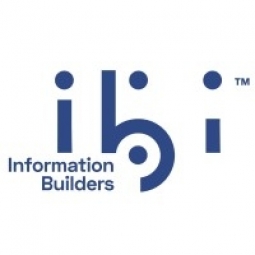Customer Company Size
Large Corporate
Region
- America
Country
- Canada
- United States
Product
- iWay Service Manager
- Microsoft SQL Server adapters
- iWay EDI adapters
Tech Stack
- Microsoft BizTalk Server
- Microsoft SQL Server
- Microsoft CRM
Implementation Scale
- Enterprise-wide Deployment
Impact Metrics
- Productivity Improvements
- Cost Savings
Technology Category
- Application Infrastructure & Middleware - API Integration & Management
- Application Infrastructure & Middleware - Data Exchange & Integration
Applicable Industries
- Food & Beverage
Applicable Functions
- Logistics & Transportation
- Sales & Marketing
Use Cases
- Inventory Management
- Supply Chain Visibility
Services
- System Integration
About The Customer
Mark Anthony Group, Inc. is a leading manufacturer and seller of wines and alcoholic beverages in the U.S. and Canada. Founded in 1972, the company is Canada’s leading privately owned importer and distributor of fine wine, premium beer, and specialty beverages. More than 15 million cases of alcoholic beverages pass through the company’s warehouse each year. The company primarily used manual processes and paper-based activities to track many warehouse transactions, both internally and with its trading partners.
The Challenge
Mark Anthony Group, a leading alcoholic beverage company in Canada, was facing challenges in streamlining the flow of information governing order entry, warehouse management, billing, and shipping/receiving operations within the company and to external partners. The company wanted to extend enterprise resource planning (ERP) automation from headquarters to the warehouse to keep the entire workflow electronic. However, even after implementing Microsoft BizTalk Server to exchange communications across its extended organization, the ability to quickly and seamlessly share information between its ERP and customer relationship management (CRM) systems continued to pose quite a challenge.
The Solution
Mark Anthony Group deployed solutions from iWay Software to help streamline warehouse operations. iWay’s Business Process Automation (BPA) Suite automates internal workflows by passing XML documents between systems to control a wide array of mission-critical business activities. Additionally, iWay manages dynamic electronic data interchange (EDI) transactions with the organization’s manufacturing partners. iWay also includes enterprise information management (EIM) capabilities for evaluating, monitoring, and managing data quality. Based on predefined business rules, it can flag exceptions and spot inconsistencies. In the future, Mark Anthony Group plans to integrate iWay into the Samba direct messaging system that underlies the company’s ERP system. This integration will permit iWay to manage many additional business processes, both internally and with trading partners.
Operational Impact
Quantitative Benefit

Case Study missing?
Start adding your own!
Register with your work email and create a new case study profile for your business.
Related Case Studies.

Case Study
The Kellogg Company
Kellogg keeps a close eye on its trade spend, analyzing large volumes of data and running complex simulations to predict which promotional activities will be the most effective. Kellogg needed to decrease the trade spend but its traditional relational database on premises could not keep up with the pace of demand.

Case Study
HEINEKEN Uses the Cloud to Reach 10.5 Million Consumers
For 2012 campaign, the Bond promotion, it planned to launch the campaign at the same time everywhere on the planet. That created unprecedented challenges for HEINEKEN—nowhere more so than in its technology operation. The primary digital content for the campaign was a 100-megabyte movie that had to play flawlessly for millions of viewers worldwide. After all, Bond never fails. No one was going to tolerate a technology failure that might bruise his brand.Previously, HEINEKEN had supported digital media at its outsourced datacenter. But that datacenter lacked the computing resources HEINEKEN needed, and building them—especially to support peak traffic that would total millions of simultaneous hits—would have been both time-consuming and expensive. Nor would it have provided the geographic reach that HEINEKEN needed to minimize latency worldwide.

Case Study
Energy Management System at Sugar Industry
The company wanted to use the information from the system to claim under the renewable energy certificate scheme. The benefit to the company under the renewable energy certificates is Rs 75 million a year. To enable the above, an end-to-end solution for load monitoring, consumption monitoring, online data monitoring, automatic meter data acquisition which can be exported to SAP and other applications is required.

Case Study
Coca Cola Swaziland Conco Case Study
Coco Cola Swaziland, South Africa would like to find a solution that would enable the following results: - Reduce energy consumption by 20% in one year. - Formulate a series of strategic initiatives that would enlist the commitment of corporate management and create employee awareness while helping meet departmental targets and investing in tools that assist with energy management. - Formulate a series of tactical initiatives that would optimize energy usage on the shop floor. These would include charging forklifts and running cold rooms only during off-peak periods, running the dust extractors only during working hours and basing lights and air-conditioning on someone’s presence. - Increase visibility into the factory and other processes. - Enable limited, non-intrusive control functions for certain processes.

Case Study
Temperature Monitoring for Restaurant Food Storage
When it came to implementing a solution, Mr. Nesbitt had an idea of what functionality that he wanted. Although not mandated by Health Canada, Mr. Nesbitt wanted to ensure quality control issues met the highest possible standards as part of his commitment to top-of-class food services. This wish list included an easy-to use temperature-monitoring system that could provide a visible display of the temperatures of all of his refrigerators and freezers, including historical information so that he could review the performance of his equipment. It also had to provide alert notification (but email alerts and SMS text message alerts) to alert key staff in the event that a cooling system was exceeding pre-set warning limits.

Case Study
Coca-Cola Refreshments, U.S.
Coca-Cola Refreshments owns and manages Coca-Cola branded refrigerators in retail establishments. Legacy systems were used to locate equipment information by logging onto multiple servers which took up to 8 hours to update information on 30-40 units. The company had no overall visibility into equipment status or maintenance history.







